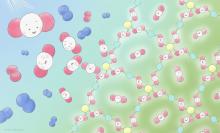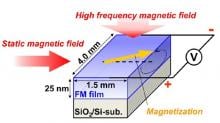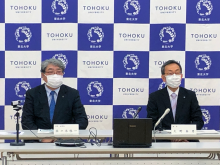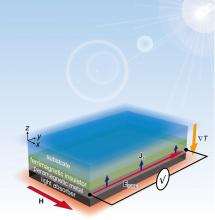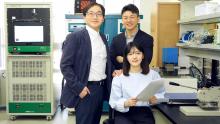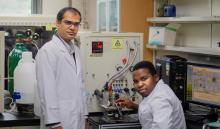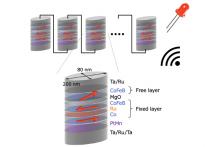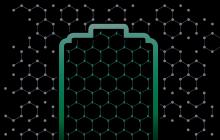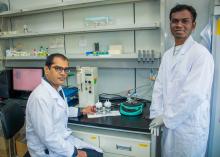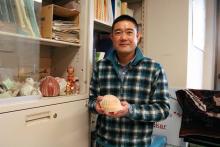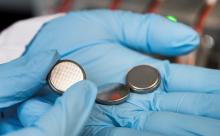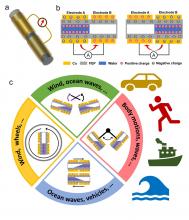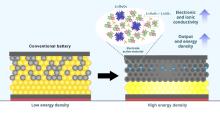Energy
News
05 Oct 2021
Researchers in Japan have found an energy-efficient way to convert the chief greenhouse gas carbon dioxide (CO2) into useful chemicals. Using the method, CO2 is transformed into structures called metal-organic frameworks (MOFs), suggesting a new and simpler route to dispose of the greenhouse gas to help tackle global warming.
01 Oct 2021
Researchers develop a composite film that can be used in nanogenerators to generate electricity from mechanical motion
29 Sep 2021
The 10th edition of TechInnovation presents an array of opportunities to catalyse technology transfer and partnerships for business growth.
15 Sep 2021
Anna Mani (23 August 1918 – 16 August 2001) was an Indian meteorologist who contributed significantly to the understanding of solar radiation, ozone and wind energy by developing a wide range of measurement tools. One of India’s pioneering female scientists, Mani excelled in the male-dominated area of meteorology and became the Deputy Director-General of the India Meteorological Department.
01 Sep 2021
Scientists from South Korea add foreign atoms to monolayer graphene in a controlled manner to selectively enhance its desirable properties
26 Aug 2021
Prof. Jong-Soo Lee, DGIST, succeeded in developing green-emitting Cd-Free quantum dot synthesis technology with high color reproduction capability
24 Aug 2021
Researchers have succeeded in storing electricity with the voltage generated from ferromagnetic resonance (FMR) using a nanometer-thin magnetic film. Exploring the storage characteristics of the commonly used iron-cobalt and iron-nickel alloy thin films, they found that by controlling the thermal conditions of the thin film to be within FMR excitation range, energy can be stored by all the electromagnetic waves that surround us – including Wi-Fi.
23 Aug 2021
Magnesium rechargeable batteries show immense promise for a greener future because of their energy density, safety, and cost. But the lack of high-performance cathode materials has impeded their development. Now, a research team has developed liquid-sulfur/sulfide composite cathodes that enable high-rate magnesium batteries.
02 Aug 2021
The Research Center for Thin Film Solar Cell, DGIST succeeded achieving the world’s highest PCE of 12.2% for flexible CZTS thin film solar cells.
27 Jul 2021
The university has unveiled a few more details of its new Green Goals Initiative, which includes developing green technology and promoting resilience and social Innovation. It also hopes to achieve carbon neutrality on campus by 2040.
18 Jul 2021
Using a CeO2 catalyst, researchers develop an effective catalytic process for the direct synthesis of polycarbonate diols without the need for dehydrating agents. The high yield, high selective process has CO2 blown at atmospheric pressure to evaporate excess water by-product allowing for a catalytic process that can be used with any substrate with a boiling point higher than water.
14 Jul 2021
Scientists develop a 3D-printed pressure sensor embedded with a temperature sensor from conductive carbon-based composites.
07 Jul 2021
A new laser that generates quantum particles can recycle lost energy for highly efficient, low threshold laser applications
29 Jun 2021
Magnetic layers interact with sunlight differently, creating a temperature gradient that generates electricity day and night.
25 Jun 2021
Perovskite colloidal quantum dots (Pe-CQDs) are highly promising nanocrystals for optoelectronic applications. However, the size of the crystals should ideally be equal to ensure a consistent energy landscape. In a recent study, scientists clarified the relationship between differences in particle size—polydispersity—and the optoelectronic characteristics of Pe-CQDs. They showed that using equally sized, or ‘monodisperse,’ quantum dots results in markedly better performance in Pe-CQD solar cells, paving the way for future optoelectronic devices.
21 Jun 2021
A tiny device incorporates a compound made from starch and baking soda to harvest energy from movement.
02 Jun 2021
Scientists have found a way to make hydrogen move faster through a solid material at cooler temperatures, paving the way for more sustainable and practical energy storage devices.
01 Jun 2021
Researchers from Korea utilized LiNO3 pre-planted lithium particles to design a stable, long-lasting lithium metal battery
25 May 2021
Scientists develop degradation-mitigating additives that vastly extend the lifespan of Nafion-based fuel cells
19 May 2021
Researchers at the National University of Singapore and Tohoku University have demonstrated that an array of electrically connected spintronic devices can harvest a 2.4 GHz wireless signal, which can be used to power and charge small electronic devices and sensors.
13 May 2021
The trick to extremely thin supercapacitors with improved performance is spraying graphene ink at an angle.
13 May 2021
Controlling the organization of molecules within polymer membranes could lead to more efficient fuel cells.
10 May 2021
A new device can light up 100 LED bulbs with a single drop of water.
15 Apr 2021
A research team based at Tohoku University has 3D printed the first proton exchange membrane, a critical component of batteries, electrochemical capacitors and fuel cells.
13 Apr 2021
Scientists develop high performing electrocatalyst to synthesize ammonia in an effort to replace conventional eco-unfriendly methods
05 Apr 2021
“The earth is suffering from several ‘diseases’: global warming, ocean acidification, habitat loss, etc. If any of these diseases remains uncured, other diseases will accelerate and cause new ones to appear, hence putting humanity’s well-being in danger,” said Associate Professor Masahiko Fujii. For this reason, the research staff of the Faculty of Environmental Earth Science keeps on assessing the current global environmental issues and promoting renewable energy sources as a possible solution.
01 Apr 2021
The promotion of electric cars has dramatically increased the demand for lithium-ion batteries. However, cobalt and nickel, the main cathode materials for the batteries, are not abundant. If the consumption continues, it will inevitably elevate the costs in the long run, so scientists have been actively developing alternative materials. A joint research team co-led by a scientist from City University of Hong Kong (CityU) has developed a much more stable, manganese-based cathode material. The new material has higher capacity and is more durable than the existing cobalt and nickel cathode materials - 90% of capacity is retained even when the number of charging-recharging cycles doubled. Their findings shed lights on developing low cost and high efficiency manganese-based cathode materials for lithium-ion batteries.
18 Mar 2021
A research team from the Faculty of Engineering of The Chinese University of Hong Kong (CUHK) has recently developed a water-tube-based triboelectric nanogenerator that can efficiently convert various irregular and low-frequency mechanical energies, including ocean wave energy, into electricity, providing a new avenue for the development of “blue energy”.

10 Mar 2021
Energy-efficient light-emitting diodes (LEDs) have been used in our everyday life for many decades. But the quest for better LEDs, offering both lower costs and brighter colours, has recently drawn scientists to a material called perovskite. A recent joint-research project co-led by the scientist from City University of Hong Kong (CityU) has now developed a 2D perovskite material for the most efficient LEDs.
18 Feb 2021
Lithium ion batteries use liquid electrolytes that have several drawbacks, which can be overcome by all-solid-state lithium secondary batteries (ASSBs). However, it is important to find efficient electrode materials for ASSBs. A research team from Japan has recently developed a novel electrode material for ASSBs by combining lithium sulfate and lithium ruthenate, which results in improved performance. The scientists hope that their novel approach will guide future research and the eventual commercialization of such high-capacity batteries.
Events
Sorry, no events coming up for this topic.
Researchers
Sorry, no researchers coming up for this topic.
Giants in history
Julian Arca Banzon (13 March 1908 – 13 September 1988) was a biochemist from the Philippines who was a pioneer in alternative fuel research. Banzon investigated the use of indigenous crops as sources of renewable fuels and chemicals.
Anna Mani (23 August 1918 – 16 August 2001) was an Indian meteorologist who contributed significantly to the understanding of solar radiation, ozone and wind energy by developing a wide range of measurement tools. One of India’s pioneering female scientists, Mani excelled in the male-dominated area of meteorology and became the Deputy Director-General of the India Meteorological Department.


